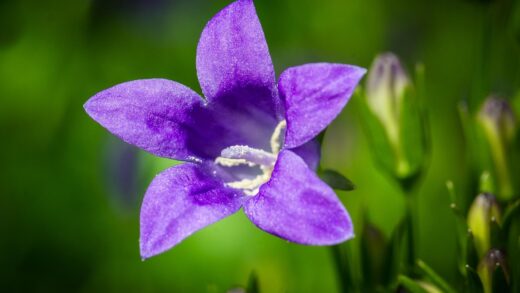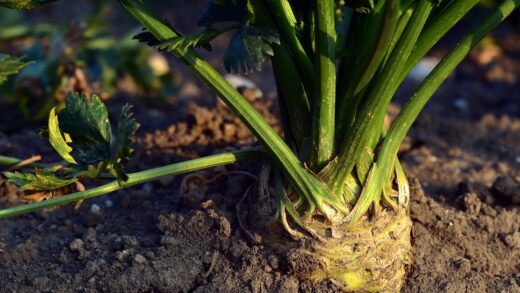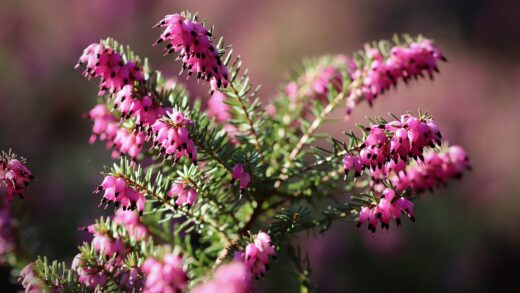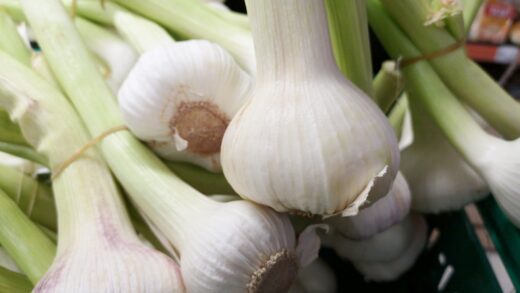Providing the appropriate nutrition is a key element in cultivating a truly magnificent common mallow. While this plant is notably self-sufficient and can thrive in average soil, a well-considered fertilization strategy can elevate its performance from merely good to truly spectacular, enhancing both its vigor and its floral display. It is crucial, however, to understand that more is not necessarily better; an excess of nutrients can be as harmful as a deficiency. This guide offers a professional perspective on the nutrient requirements of common mallow, exploring how to assess your soil, the role of essential nutrients, and the best practices for both organic and synthetic fertilization. By mastering these principles, you will be able to tailor a feeding regimen that perfectly supports the health and beauty of your plants.
The nutritional philosophy for common mallow should be one of moderation and balance. This plant has adapted to thrive in conditions that are not overly rich, and its needs are relatively modest compared to more demanding perennials or annuals. The primary goal of any fertilization program should be to supplement the existing soil fertility, not to completely overhaul it. Over-fertilization, particularly with high-nitrogen feeds, can lead to a host of problems. It often results in lush, soft, and sappy foliar growth which is highly attractive to pests like aphids and more susceptible to fungal diseases. This excessive leaf growth also comes at the direct expense of flower production, undermining the main reason for growing the plant.
Before applying any fertilizer, it is always wise to start with an understanding of your existing soil. A simple home soil test kit can provide valuable insights into the pH and the levels of the main macronutrients: nitrogen (N), phosphorus (P), and potassium (K). Common mallow generally prefers a soil pH that is neutral to slightly alkaline. If your soil is acidic, a light application of garden lime in the autumn can help to raise the pH to a more suitable level. Knowing your soil’s baseline fertility will help you make a much more informed decision about what, if any, amendments are needed.
The most effective and sustainable approach to feeding common mallow begins before the plant is even in the ground. Incorporating a generous amount of well-rotted organic matter, such as garden compost, leaf mold, or manure, into the soil during preparation is the single best thing you can do for the plant’s long-term nutrition. This not only provides a slow and steady release of a wide range of essential nutrients but also dramatically improves the soil’s structure, aeration, and water-holding capacity. For many gardens, this initial soil enrichment is all the feeding the mallow will need for its entire life cycle.
Assessing soil fertility and structure
A thorough assessment of your garden soil is the foundational step in developing a sensible nutrient management plan for your common mallow. The texture and structure of the soil are just as important as its chemical composition. Common mallow performs best in a loamy soil that provides a good balance of drainage and moisture retention. To assess your soil’s texture, take a small handful of moist soil and squeeze it. If it forms a sticky ball and is slick, you have heavy clay; if it feels gritty and falls apart easily, it is sandy. An ideal loam will form a ball that crumbles when poked.
More articles on this topic
Understanding your soil’s structure will inform you about how it holds and releases nutrients. Clay soils are naturally quite fertile as the fine particles are good at holding onto nutrient ions, but they can be poorly drained and compacted. Sandy soils, on the other hand, are very well-drained but often lack fertility because nutrients are easily leached away by water. Amending both types of soil with organic matter is the solution; it helps to break up heavy clay, improving drainage, and it adds body and nutrient-holding capacity to sandy soils.
Beyond a simple texture test, observing the existing vegetation can give you clues about your soil’s fertility. The presence of nutrient-loving weeds like nettles and docks often indicates a soil rich in nitrogen and other nutrients. Conversely, the dominance of plants like sorrel can suggest that the soil is acidic. The general health and vigor of other plants in your garden can also provide a good overall indication of the soil’s quality. If other perennials and shrubs are thriving, it is likely that your common mallow will also do well with minimal intervention.
For a more precise understanding, conducting a professional soil analysis or using a quality home testing kit is highly recommended, especially if you are starting a new garden or have had issues with plant health in the past. These tests provide specific data on pH levels and the availability of key macronutrients and micronutrients. This information allows you to move from guesswork to a targeted approach, applying only the specific nutrients that are lacking and avoiding the wasteful and potentially harmful application of unnecessary fertilizers. This scientific approach ensures you are providing exactly what your common mallow needs.
The role of primary macronutrients
Understanding the specific roles of the three primary macronutrients—Nitrogen (N), Phosphorus (P), and Potassium (K)—is essential for any gardener. Each of these elements plays a distinct and vital role in the life of a plant, and a deficiency in any one of them can limit growth. For common mallow, a balanced supply is key, with a particular emphasis on avoiding an excess of nitrogen. Nitrogen is the primary driver of vegetative growth, responsible for the development of lush, green leaves and strong stems. While a sufficient amount is necessary for a healthy plant, too much nitrogen will result in a large, leafy plant with very few flowers.
More articles on this topic
Phosphorus (P) is often referred to as the “root and flower” nutrient, and it plays a critical role in the healthy development of a common mallow. This element is essential for energy transfer within the plant, which fuels processes like photosynthesis, root development, and the formation of flowers and seeds. A soil that is deficient in phosphorus can lead to stunted growth, a weak root system, and poor flowering. Organic sources of phosphorus include bone meal and rock phosphate, which can be incorporated into the soil at planting time to provide a long-term supply.
Potassium (K), sometimes called potash, is the “health and hardiness” nutrient. It is crucial for the overall vigor of the plant, regulating many of its internal processes, including water uptake and disease resistance. An adequate supply of potassium helps the plant to withstand stresses such as drought, temperature extremes, and attacks from pests and diseases. It also plays an important role in the quality and size of the flowers. Wood ash (used sparingly) and comfrey are excellent organic sources of potassium for the garden.
For common mallow, a fertilizer that is balanced or slightly higher in phosphorus and potassium relative to nitrogen is ideal for promoting a sturdy plant with a profusion of blooms. This is why a general-purpose flower or rose fertilizer is often more suitable than a lawn fertilizer, which is typically very high in nitrogen. When choosing a granular or liquid feed, look at the N-P-K ratio on the packaging. A ratio like 5-10-10 or 10-10-10 would be more appropriate than a 20-5-5 ratio, ensuring you are encouraging a well-rounded, floriferous plant rather than just a tower of leaves.
Organic versus synthetic fertilizers
When it comes to feeding your common mallow, you have a fundamental choice between using organic and synthetic fertilizers. Organic fertilizers are derived from natural materials, such as plant and animal matter. Examples include compost, well-rotted manure, bone meal, fish emulsion, and seaweed extracts. Their primary advantage is that they release their nutrients slowly over a long period as they are broken down by microorganisms in the soil. This “slow-release” action provides a gentle, steady source of nutrition and greatly reduces the risk of over-fertilizing or burning the plant’s roots.
Furthermore, organic fertilizers do more than just feed the plant; they feed the soil. The application of organic matter improves soil structure, increases its ability to hold water and nutrients, and fosters a healthy, diverse ecosystem of beneficial soil organisms. This holistic approach builds long-term soil fertility and creates a more resilient and sustainable gardening environment. For a low-demand plant like common mallow, incorporating compost into the soil at planting time is often the only fertilization it will ever need, perfectly illustrating the effectiveness of this organic approach.
Synthetic fertilizers, on the other hand, are manufactured chemical products that provide nutrients in a concentrated, water-soluble form. They are designed to be immediately available to the plant, which means they can provide a very quick boost to growth. This can be useful for correcting a specific nutrient deficiency or for giving a struggling plant a rapid pick-me-up. However, this fast-acting nature is also their main drawback. It is very easy to over-apply synthetic fertilizers, which can damage roots, pollute groundwater through runoff, and harm the delicate balance of soil life.
For the cultivation of common mallow, the organic approach is almost always superior. The plant’s modest nutritional needs are perfectly met by the slow and steady supply from organic matter. Synthetic fertilizers are generally unnecessary and carry a significant risk of causing more harm than good by promoting weak, disease-prone growth. If you do choose to use a synthetic fertilizer, for example, on a container-grown plant, it should be a balanced, slow-release granular formulation applied sparingly in the spring, or a liquid feed diluted to half the recommended strength.
Application timing and techniques
The timing of any fertilizer application is just as important as the type of fertilizer you use. The goal is to provide nutrients when the plant is in its active growth phase and can make the most efficient use of them. For common mallow, the ideal time to apply any supplemental fertilizer is in the early spring, just as the new growth is beginning to emerge from the base of the plant. A single application at this time will provide the necessary resources to support the main flush of growth and the subsequent flowering season.
If you are using a solid, granular fertilizer or an organic amendment like compost or well-rotted manure, the best technique is top-dressing. This simply involves spreading a layer of the material on the soil surface around the base of the plant, extending out to the dripline (the edge of the foliage). Gently scratch the material into the top few centimeters of soil with a hand fork or cultivator, being careful not to disturb the plant’s roots. Watering the area afterwards will help to activate the fertilizer and start carrying the nutrients down to the root zone.
Liquid fertilizers offer a faster way to deliver nutrients and can be useful for plants in containers or for giving a quick boost to an underperforming plant. These should be applied during the peak growing season, from late spring to mid-summer. It is crucial to dilute the concentrated liquid feed according to the manufacturer’s instructions, or even at half-strength, to avoid burning the roots. Apply the liquid fertilizer to already moist soil to ensure it is absorbed effectively and does not cause root damage. Never apply liquid feed to a plant that is wilting or in very dry soil.
It is critically important to avoid fertilizing your common mallow late in the season, particularly from late summer onwards. Applying fertilizer at this time can stimulate a flush of new, tender growth that will not have sufficient time to harden off before the arrival of the first frosts. This vulnerable new growth is easily damaged by cold temperatures, which can weaken the entire plant and make it more susceptible to winter damage. Your focus in autumn should be on allowing the plant to naturally cease growing and enter its dormant period.


















